Overview
Cambodia
Captivating Cambodia is a land of beautiful temples, wild jungle and unspoilt countryside, yet still bears the scars of years of conflict.
For so long off limits to the tourist trail, Cambodia began to open up to visitors again in the late 1980s. Travellers poured into the gritty capital Phnom Penh and marvelled at the jungle temples of Angkor as the Khmer Rouge militia dissipated.
An extensive landmine clearing programme has made other areas of Cambodia accessible, and visitors should take the time to discover the hill tribes around Banlung, the colonial architecture of Battambang and the sandy beaches of Sihanoukville.
Today's tourists can expect to mix luxurious hotels and restaurants with traditional markets and ramshackle side streets in Phnom Penh and Siem Reap.
Intrepid foodies can look forward to sampling deep fried spiders and cockroaches which have become delicacies in northern Cambodia, despite being a reminder of the food crisis endured by Cambodians under the Khmer Rouge.
With the road network improving, it's time for visitors to start exploring this delightful country beyond its imposing temples.
Key Facts
Cambodia
Location
South-East Asia.
Time
GMT + 7.
Area
181,035 sq km (69,900 sq miles).
Population
14.2 million (UN estimate 2008).
Population Density
81.7 per sq km.
Capital
Phnom Penh. Population: 2 million (2007).
Geography
Cambodia shares borders in the north with Laos and Thailand, in the east with Vietnam and in the southwest with the Gulf of Thailand. The landscape comprises tropical rainforest and fertile cultivated land traversed by many rivers. In the northeast and southeast areas rise highlands. The capital is located at the confluence of the Mekong, Bassac and Tonle Sap rivers. The latter flows from a large inland lake, also called Tonle Sap, situated in the centre of the country. There are numerous offshore islands along the southwest coast.
Government
Constitutional monarchy since 1993.
Head of State
King Norodom Sihamoni since 2004.
Head of Government
Prime Minister Hun Sen since 1985.
Recent History
The authoritarian, extreme-left Cambodian People's Party remained in government following the 2003 elections, in coalition with the FUNCINPEC party led by Prince Rannaridh. In October 2004, King Norodom Sihanouk abdicated due to old age and frail health, without a clear succession. Last-minute legislation had to be administered since the constitution did not permit abdication and, eventually, the nine-member Throne Council appointed his son, Norodom Sihamoni, as the new king. King Norodom Sihamoni has vowed to remain politically neutral and open to ideas from all Cambodians.
Language
Khmer is the official language and spoken by 95% of the population. Chinese and Vietnamese are also spoken. French was widely spoken until the arrival of the Pol Pot regime and is still taught in schools, but English is now a more popular language to learn among the younger generation.
Religion
95% Buddhist (Theravada), the remainder Muslim and Christian. Buddhism was reinstated as the national religion in 1989 after a ban on religious activity in 1975.
Electricity
220 volts AC, 50Hz. Two-pin plugs are in use. Power cuts are frequent.
Social Conventions
Sensitivity to politically-related subjects in conversation is advisable. Avoid pointing your foot at a person or touching someone on the head. Women should keep their shoulders covered and not wear shorts when visiting pagodas.
Photography: Permitted, with certain restrictions, such as the photographing of military installations, airports and railway stations. It is polite to ask permission before photographing Cambodian people, especially monks.
Money
Cambodia
Currency
Riel (KHR; symbol CR). Notes are in denominations of CR100,000, 50,000, 20,000, 10,000, 5,000, 2,000, 1,000, 500, 200 and 100.
Currency Exchange
US Dollars are widely accepted and exchanged as are Thai Baht close to the Thai border, but other currencies are generally only recognised at banks.
Credit/Debit Cards and ATMs
Credit cards are now more widely accepted in upmarket hotels, shops and restaurants catering to visitors. There are ATMs in Phnom Penh, Siem Reap and Sihanoukville. It is always best to carry cash (US Dollars if necessary) in small denominations.
Traveller's Cheques
Limited acceptance. Traveller's cheques are generally not recommended. Traveller's cheques in US Dollars can be changed at banks and some hotels, but can be difficult to change outside major cities.
Banking Hours
Mon-Fri 0800-1500. Some banks are open on Saturdays 0800-1130.
Exchange Rate Indicators
Date Jan 09
£1.00 CR5,865.35
$1.00 CR4,047.95
€1.00= CR5,490.47
Public Holidays
Cambodia
Below are listed Public Holidays for the January 2009-December 2010 period.
2009
1 Jan New Year's Day.
7 Jan Victory Day.
9 Feb Meak Bochea Day.
8 Mar Women's Day.
14-16 Apr Cambodian New Year.
1 May Labour Day.
8 May Visaka Buja Day (Birth of Buddha).
12 May Royal Ploughing Day Ceremony.
13-15 May King Sihamoni's Birthday.
18 Jun Former Queen's Birthday.
18-20 Sep Pchum Ben Day.
24 Sep Constitution Day.
29 Oct Coronation Day.
31 Oct Former King Sihanouk's Birthday.
1-3 Nov Water Festival.
9 Nov Independence Day.
10 Dec Human Rights Day.
2010
1 Jan New Year's Day.
7 Jan Victory Day.
21 Feb Meak Bochea Day.
8 Mar Women's Day.
14-16 Apr Cambodian New Year.
1 May Labour Day.
13-15 May King Sihamoni's Birthday.
28 Apr Visaka Buja Day (Birth of Buddha).
23 May Royal Ploughing Day Ceremony.
18 Jun Former Queen's Birthday.
24 Sep Constitution Day.
Sep-Oct* Pchum Ben Day.
29 Oct Coronation Day.
31 Oct Former King Sihanouk's Birthday.
Nov* Water Festival.
9 Nov Independence Day.
10 Dec Human Rights Day.
* Date to be confirmed.
Note
The religious festivals are determined by the Buddhist lunar calendar and are therefore variable. Public holidays falling on a Saturday or Sunday are carried forward to the following working day.
Top Things To Do
Cambodia
• Take a river cruise along the Tonle Sap from Phnom Penh to Siem Reap. It's a great way to laze through Cambodia's wetlands.
• Go for an elephant ride in Rattanakiri and Mondulkiri; remember to grab a tour guide.
• Be a part of the extravagant Water Festival. Taking place in October/November, it is around this time that the Tonle Sap changes direction, leaving behind an abundance of fish. Crowds mingle on the river banks in Phnom Penh to watch hundreds of brightly coloured boats and their paddlers battle it out for top honours.
• Watch a traditional Cambodian Apsara dance. Siem Reap is probably the best place to watch a dance display, although travellers can occasionally catch a spontaneous one in the villages.
• Go dolphin-spotting near Kratie. Viewing Cambodia's fresh water dolphins is immensely rewarding. The best time to go is early morning or late afternoon.
• Swim in volcanic Yak Lom lake near Banlung town in Rattanakiri province. The water is clear and cool and the surrounding forest is ideal for a picnic.
• Fire a rocket launcher or M-16 in Phnom Penh. There aren't many other places in the world that would let you near such lethal weaponry. A serious reminder of the troubles Cambodia's been through.
Top Things To See
Cambodia
Click here for more images• Delight in Cambodia's Buddhist temples, such as Preah Vihear. Located in the Dangrek Mountains, the site is home to various festivals, especially during the Cambodian New Year.
• Visit the interrogation centre of Pol Pot's regime in Phnom Penh, the chilling Toul Sleng Museum of Genocide, also called S-21 (security office 21). It is also possible to visit The Killing Fields/Cheoung Ek Memorial, just outside the city.
• Do not miss Phnom Penh's gorgeous Royal Palace, which has a stunning and famous Silver Pagoda. Be sure to pay extra attention to the floor - it contains 5,000 silver tiles.
• Explore the magnificent temples of Angkor, the remains of the once mighty Khmer civilisation. Angkor Wat is the most famous temple, but the surrounding areas are worth visiting too. Go at sunrise or sunset.
• See the much photographed Ta Prohm at Angkor, easily recognisable because of the roots of massive trees growing through the building. They are left there to show how many of the temples looked before they were reclaimed from the jungle.
• Examine the extensive collection of Khmer artefacts in the distinctive, red-brick, pseudo-Khmer-style National Museum, constructed by the French in 1917.
• Travel to the little-visited northeast province of Rattanakiri, where there are hill tribes, gem mines and unspoilt national parks.
• Climb up to abandoned Bokor, the former French hill station, where there are the eerie remains of a hotel, casino, church, villas and a former royal residence. Equally as eerie, take time to visit Kep, once a beach resort which was destroyed in the 1970s.
• Relax at Sihanoukville, Cambodia's only beach resort, with its sandy beaches and offshore islands which are ideal for scuba-diving.
Getting There
Cambodia
Getting There by Air
Bangkok Airways (website: www.bangkokair.com) and Thai Airways International (website: www.thaiair.com) fly between Cambodia and Thailand. Malaysia Airlines (website: www.malaysiaairlines.com) flies from Kuala Lumpur, Vietnam Airlines (website: www.vietnamairlines.com) from Hanoi and Ho Chi Minh City, and Lao Airlines (website: www.laos-airlines.com) from Vientiane.
Approximate Flight Times
From Bangkok to Phnom Penh is 1 hour 15 minutes (there are no long haul flights outside Asia). From London to Bangkok is 11 hours 20 minutes.
Main Airports
Phnom Penh International Airport (PNH) (website: www.cambodia-airports.com/phnompenh) is 10km (6 miles) from Phnom Penh. To/from the airport: Taxis and motorbike taxis to the city are available (journey time - 10 minutes). For pre-arranged tours a pick-up service is available. Facilities: Left luggage, bureaux de change, shops, duty-free, post office and light refreshments.
Siem Reap International Airport (REP) (website: www.cambodia-airports.com/siemreap) is 8km (5 miles) from Siem Reap. To/from the airport: Taxis and motorbike taxis to Siem Reap are available (journey time - 7 to 10 minutes). For pre-arranged tours a pick-up service is available. Facilities: Left luggage, bureau de change, shops and light refreshments.
Departure Tax
US$25 levied on international departures at Phnom Penh and Siem Reap; US$13 for children under 12. Children less than two years of age are exempt.
Getting There by Water
Main ports: Phnom Penh and Sihanoukville.
Phnom Penh can be reached via the Mekong Delta through Vietnam. This route is served by regular passenger ferry services from Chau Doc in Vietnam and can be booked through travel agencies or at the dock. Sihanoukville is reached from Thailand through the border crossing at Hat Lek and the boat from Koh Kong. Tickets can be purchased at the dock in Sihanoukville.
Getting There by Road
The Thai and Vietnamese borders are open for overland access. The main highway links the capital with the Vietnam border. Border checkpoints include Poipet, Cham Yeam, O'Smach, Anlong Veng and Psar Prom (Thailand), Bavet, Kaam Samnor and Phnom Den (Vietnam). The border with Laos at Stung Treng is currently closed so travellers should check the situation as it changes regularly. Cross-border bus services are from Ho Chi Minh City in Vietnam operated by Phnom Penh Sorya Transport Company (tel: (23) 210 359; website: www.ppsoryatransport.com).
Note: It is possible to drive from Phnom Penh to Ho Chi Minh City in a day but there are formalities involved regarding the use of the same vehicle all the way. Right-hand drive vehicles (quite common in Cambodia) are not allowed entry to Vietnam. Vietnamese visas must be obtained in advance but Cambodian visas can be obtained at the border.
Getting Around
Cambodia
Getting Around by Air
Internal flights operate between Phnom Penh and Siem Reap for Angkor (journey time - 45 minutes). The main domestic carriers are Siem Reap Airways International (website: www.siemreapairways.com) and PMT Air (website: www.pmtair.com). PMT Air has suspended internal flights in 2008 while they upgrade their fleet, but continue to fly internationally. Battambang, Sihanoukville, Banlung, Sen Monorom and Stung Treng all have airports, but at the time of writing there are only flights to Banlung from Phnom Penh.
Domestic airports: The upgraded Siem Reap Airport, the main gateway for visitors going to see the ancient temples at Angkor, is a 7- to 10-minute taxi ride from the city.
Departure Tax
US$60 for foreign nationals.
Getting Around by Water
Government-run ferries depart from the Psar Cha Ministry of Transport Ferry Landing between 102 and 104 Streets and go to Siem Reap, a route popular with travellers. Tickets can be bought in person at the dock or through a travel agent. Travel can be difficult in the dry season when the water level is very low and often boat services are suspended.
Getting Around by Rail
Cambodia has only one functioning train service, running once a week from Phnom Penh Railway Station to Battambang on Saturdays and vice-versa on Sundays. Although the carriage is basic and the trip takes longer than going by bus, it's an excellent way of viewing rural Cambodia.
Getting Around by Road
Traffic drives on the right. Roads vary from excellent to very poor and there are numbered routes from Phnom Penh with Route 1 leading to the Vietnamese border. Care should be taken while driving as accidents are relatively frequent. Other vehicles cannot always be relied on to use headlights at night. Given the predominant use of motorcycles for urban public transportation, travellers should ensure that any insurance policies provide coverage for riding as a driver or passenger. Cattle often stray onto the roads. In Siem Reap, the local police have banned rental outlets from hiring motorcycles to tourists because of the high number of accidents.
Coach/bus: Long-distance buses operated by Phnom Penh Sorya Transport Company (tel: (23) 210 359; website: www.ppsoryatransport.com) travel to destinations such as Kampot, Sihanoukville, Battambang and Siem Reap.
Taxi: Taxis can be hired in main cities, although they are not metered so the price has to be fixed in advance. Tips are appreciated.
Car hire: It is really only possible to hire a car with a driver. Car hire can be arranged by private negotiation with a taxi waiting outside the hotels or through tour operators.
Climate
Cambodia
Cambodia has a tropical monsoon climate. The monsoon season runs from May to November. The most pleasant season is the dry season, from November/December to April. In the north, winters can be colder, while throughout most of the country temperatures remain fairly constant. There is often seasonal flooding in Phnom Penh and the rest of Cambodia in late July and early August, and travel may be disrupted at these times.
Required Clothing
Lightweight clothing is worn all year. Rainwear is essential during the monsoon season.
Map
Cambodia
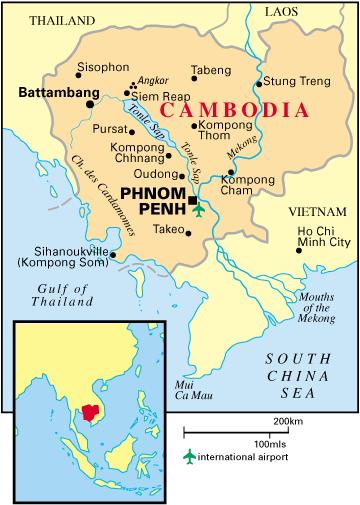
|
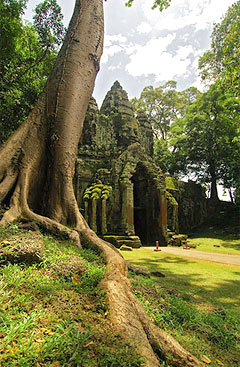
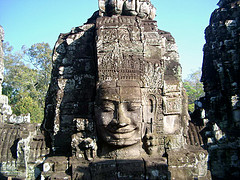
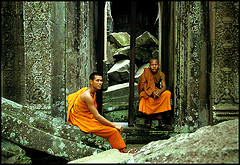
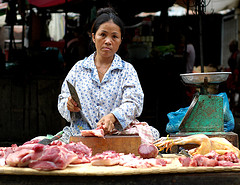
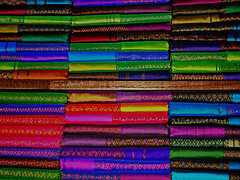
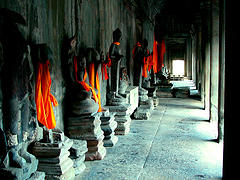
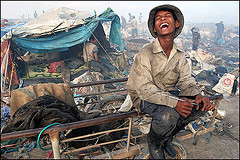
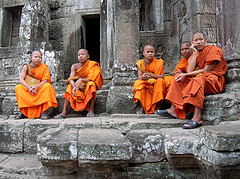
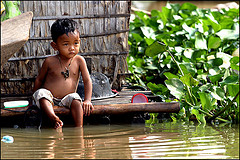
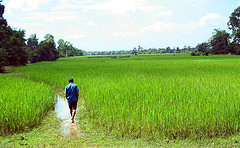
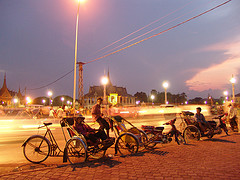
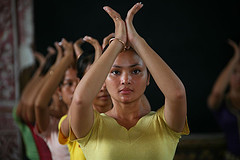
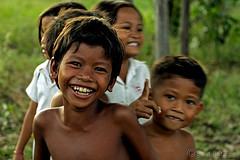
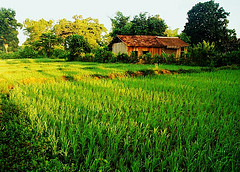
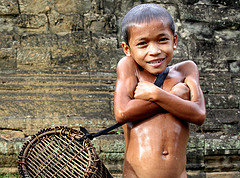
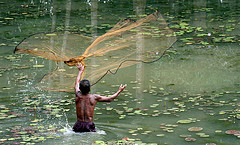
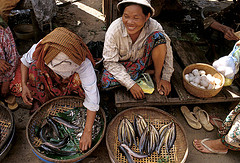
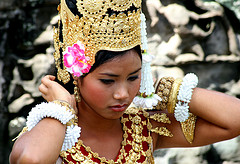
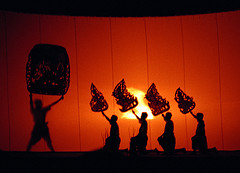
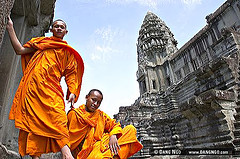
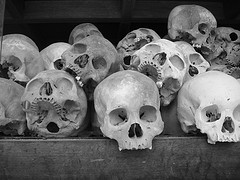
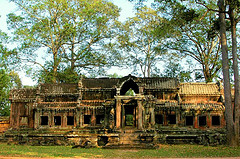
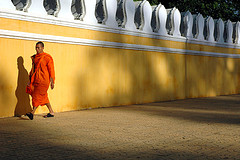
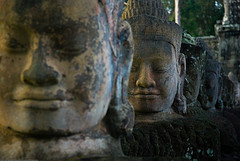
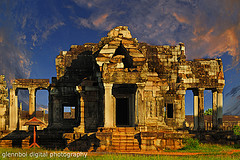
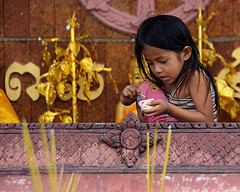
|


